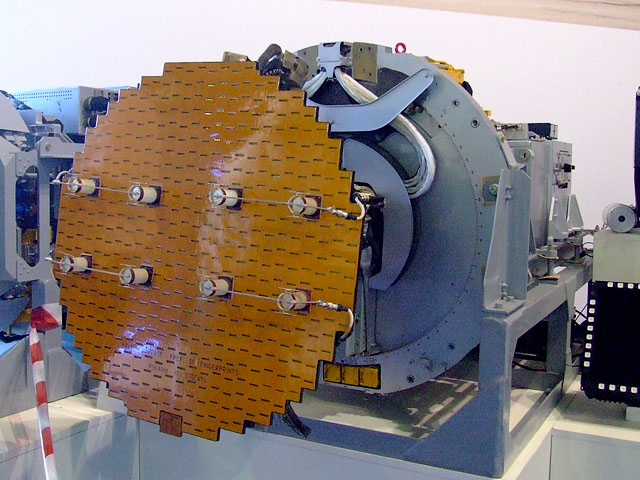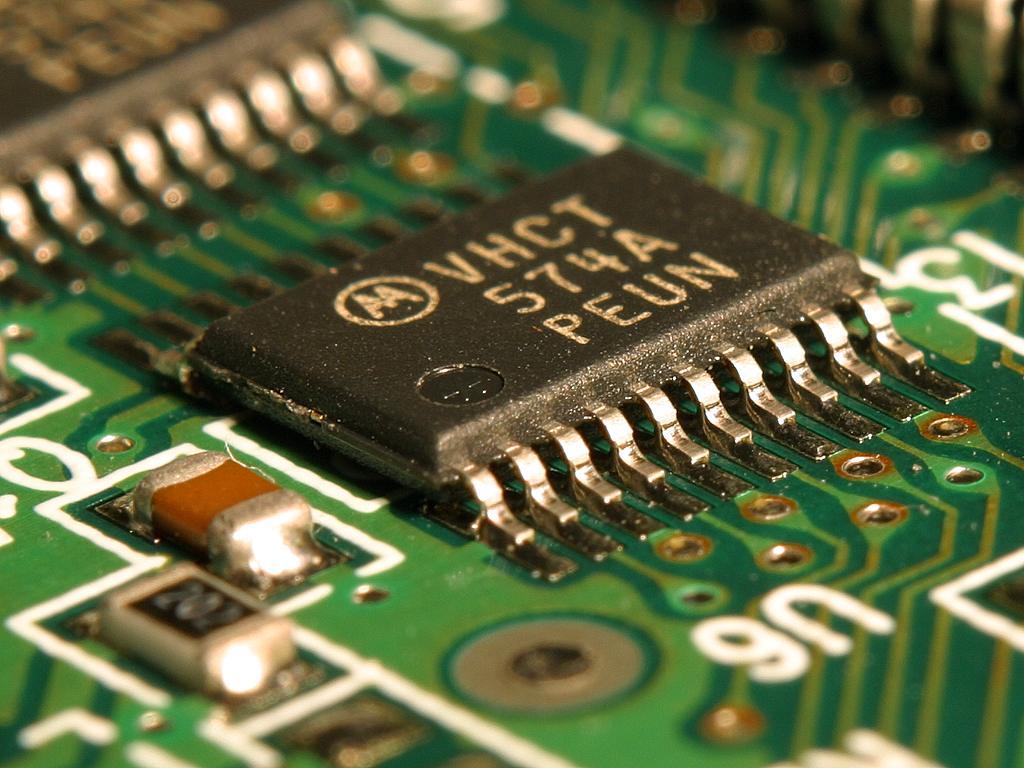|
Uttam AESA Radar
Uttam () is a Solid-state electronics, solid-state gallium arsenide (GaAs) based active electronically scanned array, AESA radar under development by the Electronics and Radar Development Establishment (LRDE), a laboratory of the Indian Defence Research and Development Organisation (DRDO). It is a low probability of intercept radar. It is a liquid cooled AESA radar featuring quad band modules that can be stacked to form a larger unit. The Uttam Mk-1 has a total of 912 TRMs. Development The radar development began in 2012 and its full-scale model was displayed at the 2017 Aero India air show and aviation exhibition. People who worked for DRDO AEW&CS's main radar and Maritime Patrol Radar were part of the project team. A fully functional active electronically scanned array (AESA) radar prototype was unveiled at Aero India 2019, the prototype was mounted inside the glass nose of a HAL Tejas prototype. Hindustan Aeronautics Limited is the lead integrator and Bharat Electronics i ... [...More Info...] [...Related Items...] OR: [Wikipedia] [Google] [Baidu] |
Active Electronically Scanned Array
An active electronically scanned array (AESA) is a type of phased array antenna, which is a computer-controlled antenna array in which the beam of radio waves can be electronically steered to point in different directions without moving the antenna. In the AESA, each antenna element is connected to a small solid-state transmit/receive module (TRM) under the control of a computer, which performs the functions of a transmitter and/or receiver for the antenna. This contrasts with a passive electronically scanned array (PESA), in which all the antenna elements are connected to a single transmitter and/or receiver through phase shifters under the control of the computer. AESA's main use is in radar, and these are known as active phased-array radar (APAR). The AESA is a more advanced, sophisticated, second-generation of the original PESA phased-array technology. PESAs can only emit a single beam of radio waves at a single frequency at a time. The PESA must utilize a Butler matri ... [...More Info...] [...Related Items...] OR: [Wikipedia] [Google] [Baidu] |
Technology Transfer
Technology transfer (TT), also called transfer of technology (TOT), is the process of transferring (disseminating) technology from the person or organization that owns or holds it to another person or organization, in an attempt to transform inventions and scientific outcomes into new products and services that benefit society. Technology transfer is closely related to (and may arguably be considered a subset of) knowledge transfer. A comprehensive definition of technology transfer today includes the notion of collaborative process as it became clear that global challenges could be resolved only through the development of global solutions. Knowledge and technology transfer plays a crucial role in connecting innovation stakeholders and moving inventions from creators to public and private users. Intellectual property (IP) is an important instrument of technology transfer, as it establishes an environment conducive to sharing research results and technologies. Analysis in 2003 showe ... [...More Info...] [...Related Items...] OR: [Wikipedia] [Google] [Baidu] |
Side Lobe
In antenna engineering, sidelobes are the lobes (local maxima) of the far field radiation pattern of an antenna or other radiation source, that are not the ''main lobe''. The radiation pattern of most antennas shows a pattern of "''lobes''" at various angles, directions where the radiated signal strength reaches a maximum, separated by "''nulls''", angles at which the radiated signal strength falls to zero. This can be viewed as the diffraction pattern of the antenna. In a directional antenna in which the objective is to emit the radio waves in one direction, the lobe in that direction is designed to have a larger field strength than the others; this is the "''main lobe''". The other lobes are called "''sidelobes''", and usually represent unwanted radiation in undesired directions. The sidelobe directly behind the main lobe is called the back lobe. The longer the antenna relative to the radio wavelength, the more lobes its radiation pattern has. In transmitting antennas, ... [...More Info...] [...Related Items...] OR: [Wikipedia] [Google] [Baidu] |
Electronic Countermeasure
An electronic countermeasure (ECM) is an electrical or electronic device designed to trick or deceive radar, sonar, or other detection systems, like infrared (IR) or lasers. It may be used both offensively and defensively to deny targeting information to an enemy. The system may make many separate targets appear to the enemy, or make the real target appear to disappear or move about randomly. It is used effectively to protect aircraft from guided missiles. Most air forces use ECM to protect their aircraft from attack. It has also been deployed by military ships and recently on some advanced tanks to fool laser/IR guided missiles. It is frequently coupled with stealth advances so that the ECM systems have an easier job. Offensive ECM often takes the form of jamming. Self-protecting (defensive) ECM includes using blip enhancement and jamming of missile terminal homers. History The first example of electronic countermeasures being applied in a combat situation took place durin ... [...More Info...] [...Related Items...] OR: [Wikipedia] [Google] [Baidu] |
Pulse-Doppler Radar
A pulse-Doppler radar is a radar system that determines the range to a target using pulse-timing techniques, and uses the Doppler effect of the returned signal to determine the target object's velocity. It combines the features of pulse radars and continuous-wave radars, which were formerly separate due to the complexity of the electronics. The first operational pulse-Doppler radar was in the CIM-10 Bomarc, an American long range supersonic missile powered by ramjet engines, and which was armed with a W40 nuclear weapon to destroy entire formations of attacking enemy aircraft. Pulse-Doppler systems were first widely used on fighter aircraft starting in the 1960s. Earlier radars had used pulse-timing in order to determine range and the angle of the antenna (or similar means) to determine the bearing. However, this only worked when the radar antenna was not pointed down; in that case the reflection off the ground overwhelmed any returns from other objects. As the ground moves at th ... [...More Info...] [...Related Items...] OR: [Wikipedia] [Google] [Baidu] |
Active Electronically Scanned Array
An active electronically scanned array (AESA) is a type of phased array antenna, which is a computer-controlled antenna array in which the beam of radio waves can be electronically steered to point in different directions without moving the antenna. In the AESA, each antenna element is connected to a small solid-state transmit/receive module (TRM) under the control of a computer, which performs the functions of a transmitter and/or receiver for the antenna. This contrasts with a passive electronically scanned array (PESA), in which all the antenna elements are connected to a single transmitter and/or receiver through phase shifters under the control of the computer. AESA's main use is in radar, and these are known as active phased-array radar (APAR). The AESA is a more advanced, sophisticated, second-generation of the original PESA phased-array technology. PESAs can only emit a single beam of radio waves at a single frequency at a time. The PESA must utilize a Butler matri ... [...More Info...] [...Related Items...] OR: [Wikipedia] [Google] [Baidu] |
GaAs
Gallium arsenide (GaAs) is a III-V direct band gap semiconductor with a zinc blende crystal structure. Gallium arsenide is used in the manufacture of devices such as microwave frequency integrated circuits, monolithic microwave integrated circuits, infrared light-emitting diodes, laser diodes, solar cells and optical windows. GaAs is often used as a substrate material for the epitaxial growth of other III-V semiconductors, including indium gallium arsenide, aluminum gallium arsenide and others. History Gallium arsenide was first synthesized and studied by Victor Goldschmidt in 1926 by passing arsenic vapors mixed with hydrogen over gallium(III) oxide at 600 °C. The semiconductor properties of GaAs and other III-V compounds were patented by Heinrich Welker at Siemens-Schuckert in 1951 and described in a 1952 publication. Commercial production of its monocrystals commenced in 1954, and more studies followed in the 1950s. First infrared LEDs were made in 1962. Preparatio ... [...More Info...] [...Related Items...] OR: [Wikipedia] [Google] [Baidu] |
Solid-state (electronics)
Solid-state electronics are semiconductor electronics: electronic equipment that use semiconductor devices such as transistors, diodes and integrated circuits (ICs). The term is also used as an adjective for devices in which semiconductor electronics that have no moving parts replace devices with moving parts, such as the solid-state relay, in which transistor switches are used in place of a moving-arm electromechanical relay, or the solid-state drive (SSD), a type of semiconductor memory used in computers to replace hard disk drives, which store data on a rotating disk. History The term ''solid-state'' became popular at the beginning of the semiconductor era in the 1960s to distinguish this new technology. A semiconductor device works by controlling an electric current consisting of electrons or holes moving within a solid crystalline piece of semiconducting material such as silicon, while the thermionic vacuum tubes it replaced worked by controlling a current of el ... [...More Info...] [...Related Items...] OR: [Wikipedia] [Google] [Baidu] |
EL/M-2052
The Elta 2052 or EL/M-2052 is an X-Band airborne Active Electronically Scanned Array (AESA) fire control radar (FCR) designed for fighter aircraft to support air-to-air combat and strike missions. Currently, it is fitted in the SEPECAT Jaguar as part of the Indian Air Force (IAF) DARIN III upgrade program. The radar is also fitted in HAL Tejas, and could also be used on other fighter aircraft such as F-15, MiG-29, Mirage 2000, and FA-50 Block 20. The FCR is based on fully solid-state active phased array technology. The radar has multi-target tracking capabilities, able to track up to 64 targets simultaneously. The EL/M-2052 radar incorporates operational feedback from Israeli Air Force combat pilots. In the air-to-air mode, the radar enables long-range multi-target detection and enables simultaneous weapon deliveries in combat engagements. The Synthetic Aperture Radar (SAR) capabilities of the radar include high-resolution mapping, ground/surface moving target detection, and ... [...More Info...] [...Related Items...] OR: [Wikipedia] [Google] [Baidu] |
Aeronautical Development Agency
The Aeronautical Development Agency (ADA), under the Department of Defence Research and Development (DR&D) of India's Ministry of Defence, was established in Bangalore in 1984 to oversee the development of the India's Light Combat Aircraft (LCA) programme. It has developed the Tejas and is developing the Tejas Mk 2, TEDBF and AMCA. Facilities *ASMS *System Design and Evaluation Facility *Computing Center *Iron Bird *LCA Hangar *Lightning Test Facility *Virtual Reality *Wind Tunnel Testing Facility Software development ADA has established advanced state of the art computing centre with several powerful equipments and software. ADA has developed specialised software in the fields of computer-aided design (CAD), computer-aided engineering (CAE), computer-aided manufacturing (CAM), avionics, systems, independent validation and verification, flight simulation. The spin-off benefits of the research and development is realised with help of commercial partnership with leading ... [...More Info...] [...Related Items...] OR: [Wikipedia] [Google] [Baidu] |
Hawker 800
The Hawker 800 is a mid-size twinjet corporate aircraft. It is a development of the British Aerospace 125, and was assembled by Hawker Beechcraft. Development In April 1981, the British Aerospace (BAe) board sanctioned the programme to improve the British Aerospace 125-700 series. By May 1983 the new aircraft was ready for its first test flight. The BAe 125-800 series has a number of modifications and changes over the 700, the most noticeable being the redesigned cockpit windscreen. Accompanying this are a modified rear fuselage fairing, as well as a glass cockpit and uprated (from 3,700 to 4,300 lb thrust) Garrett TFE731, Garrett TFE731-5R-1H engines. British Aerospace also improved the wing by incorporating new outer wing sections. This helped to reduce drag and improve aerodynamic efficiency. The 125-800 series would become a sales success. From the first BAe 125 flight in August 1961 it took nineteen years until the 500th airframe was sold. In a little over five years, ... [...More Info...] [...Related Items...] OR: [Wikipedia] [Google] [Baidu] |




